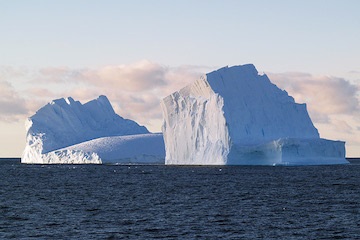610321-Meltling Bergs.jpg

Icebergs melt at different rates depending on their size, shape, and many other factors. Credit: United States Antarctic Program, Patrick Rowe, NSF.
You might not think that the way an iceberg melts would matter much -- but it does. As an iceberg melts, the change in ocean temperature and salinity can alter currents and have other effects. So scientists need to know how and how quickly icebergs melt to make sure their ideas of how the oceans work are accurate.
Researchers in Australia recently contributed to that effort with experiments and mathematical models. Their work showed that icebergs don’t all melt the same way.
They tested blocks of ice of different sizes and shapes in the laboratory. They then compared the results to their models, and found that real icebergs should melt in the same way as the ones in the lab.
Among other findings, the researchers discovered that small icebergs should melt at a faster rate than big ones. In addition, a skinny iceberg with a lot of ice below the ocean surface should melt faster than a wide berg with less of its total mass below the surface. And turbulence below and around an iceberg as it plows through the water can make it melt up to 50 percent faster.
All of this is important because more icebergs are breaking off glaciers and moving into the oceans. As they melt, they’re contributing a huge amount of freshwater to the oceans. But the time it takes for an iceberg to melt can range from months to years to decades. So having a better handle on how icebergs melt can help scientists make more accurate forecasts of how the oceans could change in the years ahead.

